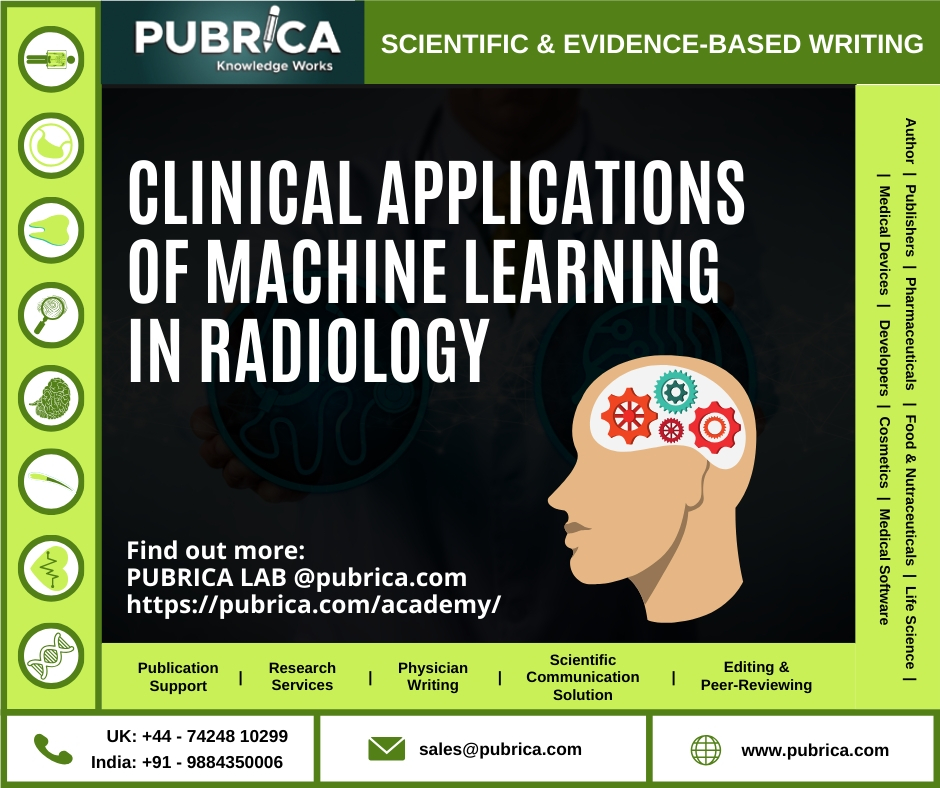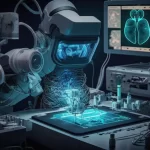
Clinical Applications Of Machine Learning In Radiology
February 11, 2020
Steps to use Artificial Intelligence in Imaging
February 20, 2020In Brief
- Radiology is a branch of medicine that practices image technology to diagnose and treat various diseases
- Diagnostic radiology and interventional radiology which helps the radiologists to understand the in-depth severity of the disease
- Diagnostic radiology includes computed tomography (CT), mammography, magnetic resonance imaging (MRI) and magnetic resonance angiography (MRA), X-ray, ultrasound, positron emission tomography, nuclear medicine scans, fluoroscopy
- It helps in diagnosing different types of diseases such as colon cancer, heart diseases, breast cancer, diagnose angiography, bone scan, thallium cardiac stress test, thyroid scan, chest X-ray

On the other hand, an interventional radiologist uses the diagnosed reports as the base to treat the disease in any part of the affect body site through the usage of wires, catheters and other micro-instruments to allow a minute incision into the body (BSIR, 2018).
This procedure used often to treat fibroids in the uterus, liver problems, cancers or tumours treatments using chemoembolization or Y-90 radio embolization and ablation with radiofrequency, microwave ablation, cry ablation, kidney problems, back pain through vertebroplasty and kyphoplasty, treating blockage in the arteries and veins through angiography or angioplasty and stent placement, venous access catheter placement, such as ports and PICCs, biopsies from lungs and thyroid obtained through needle, feeding tube placement, breast biopsy guided either by stereotactic or ultrasound techniques and uterine artery embolization.
As time progresses, medical technology advances year by year and resolves most of the mysterious diseases through advanced diagnostic procedures. In this present scenario, modern medical technology has occupied its significant position in almost all the diagnostic world, for example implementing artificial intelligence (AI), computational intelligence and domain intelligence. Hence, in this present paper author is trying to focus more information on the incorporation of AI, computational intelligence and domain intelligence in the radiology field.

Artificial intelligence is rapidly progressing in medicine, particularly in radiology. It was performed based on performing tasks on computer systems that involve human intelligence such as decision making, visual perception, language translating and speech recognition (Pakdemirli, 2019). AI extraordinarily recognizes complex patterns in imaging data and provide a quantitative assessment in an automated fashion. More accurate and reproducible radiology assessments ae done when AI integrated into the clinical workflow as a tool to assist physicians. AI is an amalgamated technology used in radiology and diagnoses diseases like lung cancer- thoracic imaging, which captures pulmonary nodules that help in distinguish between benign or malignant.
In mammography screening AI technically diagnose and interprets the presence of breast cancer by identifying micro calcifications (deposits of a small amount of calcium in the breast (Hosny et al., 2018).
In the mainstream of radiology, Computer-aided diagnosis (CAD) is a rapidly accessing technique used in clinical work with along with AI in radiology. Since, two decades CAD system was put in clinical practice in radiology to diagnose prostate, breast, lung and colon cancer (ESR, 2019). To interpret the image diagnosis, the radiologist uses computer output as a “second opinion” and obtain assistance for accurate detection.
The incorporation of computational intelligence or algorithm usually comprises of incredible stages like the classification of data using Artificial Neural Networks (ANN), image feature analysis and image processing. Temporal subtraction, an element of CAD which has been applied for enhancing interval changes and for suppressing stable structures (e.g., typical structures) between 2 successive radiologic images.
In this context, to slow down the misregistration artefacts on the temporal subtraction images, it follows a nonlinear image warping technology which tries to match the old image with the newer image developed. Temporal subtraction procedure was evolved more from chest radiographs, a method which is mostly applicable to chest computed tomography (CT) and also in diagnosing nuclear medicine bone scans improved diagnostic accuracy significantly.
In 1990 ANN was initially used for computerized differential diagnosis of interstitial lung diseases in CAD, later it was tremendously used in CAD imaging modalities, position emission tomography/CT and diagnosis of interstitial lung nodules in chest radiography. CAD focuses on picture archiving and communication systems and will become a standard of care for diagnostic examinations in daily clinical work(Shiraishi et al., 2011).
A reinvention of radiology is now considered fully digital domain, where new tools, picture archiving and communication systems (PACS) and digital modalities, were combined with new workflows and environments that took advantage of the tools. Similarly, a new cognitive radiology domain will appear when AI tools combine with new human-plus-computer workflows and environments.
Like all technologies, AI will change radiology for better and worse at the same time. PACS and speech recognition have made radiologists real-time, digital, and virtual- the price of admission to the information age. AI enables radiologists to take advantage of machine learning (ML) and AI. In the present prototype, radiologists have the potential to become a foundation of precision health care and further increase their value (Fig 1).
Since several years, radiologists have been looking for advanced improvements to visualize the diagnosed images in a better manner, but as they were fell back due to no quantification findings, they were left short of the precision medicine goal. AI’s ability to quantify outcome may provide the bridge between mere visualization and precision medicine. AI will automate parts of radiologists’ current jobs, at the same time as it improves their consistency and quality and potentially lowers operating costs. This technique will free up radiologists to become more productive and to focus on the parts of radiology that humans do best (Dreyer & Geis, 2017).
Future aspect
Finally, look for AI that interacts with all clinical data, to expand radiologists’ diagnostic and clinical roles. Hence, radiologists should actively pursue AI that augments, and not just automates, what they do. AI products should empower radiologists to provide more value, more efficiently. The research for developing AI that improves the efficiency of radiology and gains more value from current examinations.
References:
- BSIR (2018). What is Interventional Radiology? [Online]. 2018. British Society of Interventional. Available from: https://www.bsir.org/patients/what-is-interventional-radiology/.
- Dreyer, K.J. & Geis, J.R. (2017). When Machines Think: Radiology’s Next Frontier. Radiology. [Online]. 285 (3). pp. 713–718. Available from: http://pubs.rsna.org/doi/10.1148/radiol.2017171183.
- ESR (2019). What the radiologist should know about artificial intelligence – an ESR white paper. Insights into Imaging. [Online]. 10 (1). pp. 44. Available from: https://insightsimaging.springeropen.com/articles/10.1186/s13244-019-0738-2.
- Hosny, A., Parmar, C., Quackenbush, J., Schwartz, L.H. & Aerts, H.J.W.L. (2018). Artificial intelligence in radiology. Nature Reviews Cancer. [Online]. 18 (8). pp. 500–510. Available from: http://www.nature.com/articles/s41568-018-0016-5.
- Pakdemirli, E. (2019). Artificial intelligence in radiology: friend or foe? Where are we now and where are we heading? Acta Radiologica Open. [Online]. 8 (2). pp. 205846011983022. Available from: http://journals.sagepub.com/doi/10.1177/2058460119830222.
- Shiraishi, J., Li, Q., Appelbaum, D. & Doi, K. (2011). Computer-aided diagnosis and artificial intelligence in clinical imaging. Seminars in nuclear medicine. [Online]. 41 (6). pp. 449–62. Available from: http://www.ncbi.nlm.nih.gov/pubmed/21978447.
